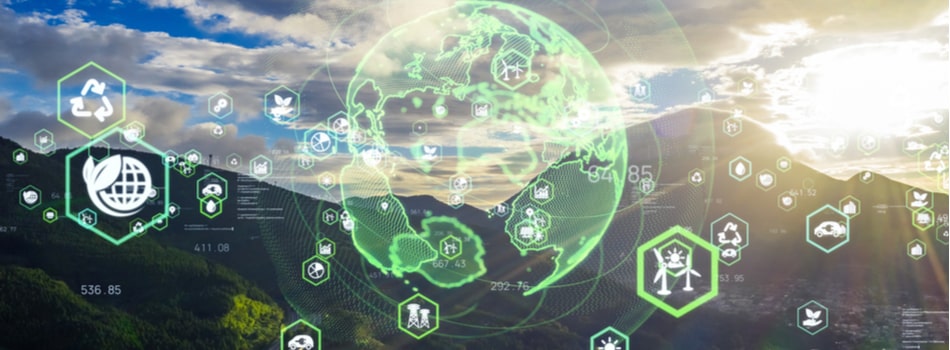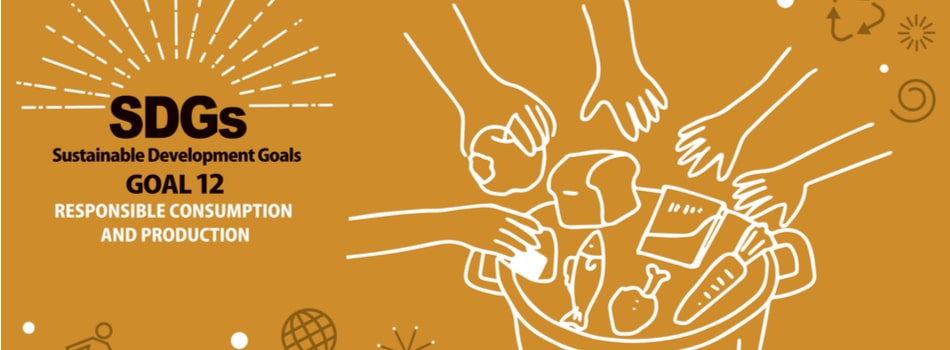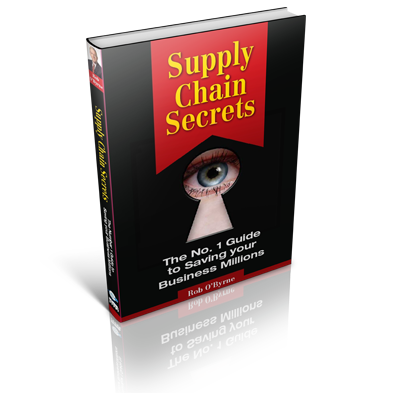When it comes to educated speculation about the future of supply chains, I can think of nobody better to talk to than Sheri Hinish.
After all, aside from holding the position of Global Executive Partner at IBM, Sheri has earned her eponymous title of Supply Chain Queen via widespread acclaim and has amassed a string of professional accolades. They include the “People’s Choice 2020 Global Woman in Supply Chain Leader” and Supply & Demand Chain Executive “Pro to Know” for 2019, 2021, and 2021.
So talk to her I did, in a candid interview covering her views on the future of supply chain management and operations. Here’s what Sheri had to say.
Sustainability: Driving the Future of Supply Chains
Rob: So, Sheri, tell us about the future of the supply chain. What’s happening? I mean, everyone’s talking about AI and robots and stuff, but I bet you can tell us a lot more than that.
Sheri: Yeah, I want to talk about the shift in supply chains and how they were traditionally viewed in a transactional light. When I was coming up in the profession, many considered the supply chain primarily as a lever of cost improvement, where the lowest price means you’re effective and efficient.
Today, as we transition into a purpose economy or even an experience economy, the concept of brand belongingness and values is becoming a critical factor in loyalty and choice. So supply chains are becoming more strategic and customer-centric, where things like digitising your planning execution orchestration are no longer “nice to haves.”
The one thing that I want to highlight here is that global supply chains power the world. They’re very interconnected and complex. I think that’s one thing that we can take away from what’s happening right now in the world. We’re all interconnected. We’re one planet, one people, and we need to start thinking about things differently, including the transition to sustainable supply chains.
On Sustainability, Development, and Goals
Rob: What does sustainability mean, though, when we’re talking about supply chains?
Sheri: When I think about sustainable supply chains, it’s a Venn diagram of people, planet, and economic prosperity. But then overlaid with that at the 10,000-fοοt level, it’s the idea of industrial, natural, human, and technological systems, working in concert to create a better world—a world that we share, where we have a profound respect for the environment and the social needs that we must meet.
If you think about what’s happening in the world right now with COVID, the Black Lives Matter movement, and being in the middle of a climate crisis, there’s a vision, which I think of like a roadmap for sustainable supply chains.
That vision is called the sustainable development goals (SDGs). For anyone who hasn’t heard of that yet, it’s 17 goals that tie in that environmental, social, and governance (ESG) prosperity. That’s a bold path for our future, and 169 related targets are supported with ISO standards—so it’s very pragmatic.
And this is how we understand that interconnectivity that I was talking about and how we measure progress. So when you think about supply chains, there’s authentic context there. It’s not ivory tower stuff.
We’re talking responsible consumption and production, for example, transition to renewable energy, ethical labor and trade, the manufacturing and retail impacts on life on land and underwater, just being sustainable and meaningfully contributing to the communities where we operate. All of that equates to sustainability in the supply chain.
Sustainable Supply Chain in Action: An Example
Rob: Which companies do you see as really doing sustainability, using SDGs, well in their supply chains now?
Sheri: I think that if, in sustainable supply chains, the SDGs are the roadmap, then that shared purpose is the vision, and shared purpose can be defined as doing well and doing good, and the one company that’s front of mind for me is Unilever.
Unilever has a brilliant way of taking this strategic vision and then breaking it down into operational and tactical goals connected at the individual level.
One cool thing to highlight is that Unilever’s people don’t confuse sustainability with philanthropy. It’s not an initiative or a project, and there isn’t a department per se. Instead, it’s embedded in the day-to-day of every single person working there, and they don’t leave their values at the door—so it’s super-cool.
Sustainability Starts With Responsible Production
Rob: From your perspective, then, which of the 17 SDGs that make up this sustainability roadmap pertain particularly well to supply chains?
Sheri: So if I had to choose, I would pick SDG 12, which is all about sustainable, or, I should say, responsible, production. SDG 12 has some fundamental tenets in that tangible context for supply chains. It’s around managing natural resources efficiently and the way we view materials, tying these issues into the circular economy concept.
Think of it as being about encouraging industry, business, and consumers to work in concert toward responsible consumption and production, including sourcing, even sustainable sourcing, and resource efficiency.
It encompasses some of those classic lean levers that we know and love, such as recycling materials—and recycling is not necessarily the answer. Nevertheless, it’s undoubtedly another tenet of SDG 12.
And then it’s about procurement practices, product and service information, labeling, all of those things that speak clearly to transparency—and that’s a key takeaway right now. It’s vital to inform that customer experience because people want to trust the products they buy and use.
Supply Chains as a Conduit of Change
Rob: For supply chain practitioners generally, it would be easy to sit back and say that all this has to be driven from the top—by the senior executives. But are there things that non-executive practitioners could begin to promote or affect from within the business?
Sheri: Yeah, I think there are, and when people ask where to start, I always like to begin with the nine Rs of the circular economy. That’s important because you have to rethink consumer behavior, and you start, for example, by asking questions like, “Do I need this item? Do we need to buy it?”
It’s smart consumption, responsible consumption, but material choices play a fundamental role in achieving SDG 12 in sustainable supply chain. You have to ensure that your product is safe, that it is ethically sourced and that you understand something called the lifecycle impact.
So you know, when you think at the material level, a material is born, okay? It has a birth certificate and a passport. So as it moves through each node in the supply chain, it’s akin to checking in, and you’re measuring these things like greenhouse gas emissions or water impact, or even material circularity.
Design is another critical point—the materials you use and your product design. How are you sourcing those raw materials? What are those choices? Because one decision can drastically change the complexity of a product’s network, lead time, the risks, the impacts, etc.
So when you want to build a sustainable product, you hear a lot about transparency, and you think about the importance of supply chains. That’s why I get so excited because 80 to 90% of that rich product information happens in supply chains, and so do 50 to 85% of those sustainability impacts. So supply chains are right at the heart of things. In my opinion, they are the conduit of change when you think about a better world.
2 Key Sustainability Takeaways
Rob: If businesses and supply chains want to be safe and robust enough for the future to do their bit in terms of sustainability, what will be a couple of critical things on which to focus?
Sheri: A couple of takeaways then… When a company is guided by shared purpose, doing well and doing good, similar to Unilever, and you embed sustainability properly in your strategy and practice, there are tangible benefits, like, for instance, increased customer loyalty, investors and consumers want sustainability. It’s a priority. You improve your employee relations.
Sustainability involves a ton of risk management that I think many people don’t understand. You get those operational efficiencies, some of those classic levers that we are familiar with as supply chain practitioners—also improved supplier relations and stakeholder engagement.
You get greater profitability, higher corporate valuation, and lower cost of capital typically, and these benefits all drive long-term value creation.
So beyond that quarterly or annual ticker, you’re really looking at the five to 10-year play, thinking about how you are impacting things like climate change and social rights and equity. So that is where the future of supply chains is headed, in my opinion.
And 3 Future Supply Chain Trends
Rob: What would you identify as three significant trends that will arise in future supply chains and for which we should look out?
Sheri: I think right now that we see an uptick in ecommerce and digital transformation and what that provides for an enterprise’s customers and supply chain trading partners—primarily access, visibility, transparency, and offer competitive advantage.
The significant changes that I see right now are technology adoption at scale, sustainability (which is becoming front and center in core strategy considerations), extended producer responsibility, and digital supply chain as a service. In unpacking those, though, I think it’s important to stress the reality that a digital divide exists.
So I’m speaking from the perspective of practitioners and professionals like me, who came from industry and transitioned to technology, so we’re not necessarily technologists.
Despite what many tech providers think, all supply chains are not run on laptops. They’re very complex, and they’re characterised by spreadsheets and piles of paper in many parts of the world. We sometimes forget that people still stand up our supply chains globally. So that’s the first point.
Sustainability is a priority for investors, consumers, and associates. As we learn more about our responsibility in defining that in the world we share, I see a couple of questions emerging as key trends.
Do we understand the total cost of ownership of a product or service? Do we understand the risk and the costs associated with it? And sometimes, we externalize that risk.
We face complex opportunities to choose a better way to design for future generations. Like when you think about the idea of access. For example, “how do I tap into a digital supply chain or transformation if it’s not at my fingertips?”
I’m seeing a lot of SMBs think about supply chain as a service, where you can outsource that digitization and refocus on brand building issues, like “Who are we? What do we stand for? What’s our brand purpose?” and concentrate on having a kick-ass product or service instead of trying to create this global supply chain orchestration that may not be a core competency. So those are the three key trends that I’m seeing right now in the future of supply chain.
Some Tips for New Supply Chain Practitioners
Rob: Considering all that we’ve covered today, what would be the one or two tips you’d give to people starting their supply chain careers? What do they need to grasp, and where should they focus their studies?
Sheri: I think that supply chains are changing. It’s interesting because when I started consulting, I would go into a supply chain organisation, and I would ask ten different people how they would define the supply chain. I’d get ten different answers—and that was recently.
Similarly, you’ll get ten different answers when you ask the same ten people how they would define a sustainable supply chain. So I think we still don’t understand what supply chain means, and if someone were to ask me what it is, I think it’s better defined now as new school supply chain and STEM or STEEM even.
I say that because when you think about the evolution of technology and the importance of data science and engineering, and also the arts, it means that change management in organizational leadership is critical now for success with digital transformation.
I think studying data analytics, viewing sourcing and procurement through the digital lens while including sustainability and circular economy—those are crucial concepts to grasp.
Practitioners must also think about smart manufacturing, IoT, Edge, how the convergence of tech really allows us to leapfrog in some markets, and then also to design our processes to be more effective, and think differently about things.
Tips to-go From a Pro to-know
So there you have it, Sheri’s take on future developments in the supply chain sphere. Many of her thoughts and ideas resonated with me during the interview, which incidentally, is also captured in two videos (Future of Supply Chain with Sheri Hinish – Part 1 and Part 2) on our YouTube channel.
As you digested this content, I feel sure that you, too, will have found points to which you can relate as a supply chain professional, enthusiast, or observer.
In these exciting times for supply chain and logistics, everything is moving and shaking at unprecedented rates of change and development. Against that background, it makes absolute sense to mine the insights of people like Sheri Hinish regularly. They often possess the perspective that can easily escape those of us with our heads down in the trenches daily.
I hope you found Sheri’s observations and opinions as insightful and fascinating as I did. I look forward to bringing you many more viewpoints from prominent personalities in our exciting industry.
Editor’s Note: The content of this post was originally published on Logistics Bureau’s website dated January 18, 2022, under the title “Future Supply Chain Insights from Pro-to-know, Sheri Hinish“.










